The ongoing digital revolution since the 1990s onwards leading to ever more networked societies has changed power balances, wealth and knowledge distribution and increasingly encroaches the relative independence of the disciplines of architecture and urbanism and us humans. As our bodies, buildings, and cities are being retrofitted with technology to gain dynamic intelligence and contextual awareness, how might we, as designers, provide visions of new spatial typologies and alternative modes of practice?

This question forms the basis of this exhibition as elaborated by students of the graduation studio ‘Critical Intermediate Affairs (CIA)’ at the Eindhoven University of Technology. By way of a performance-based hybrid installation that represents the realization of spatial concepts once seen as futuristic visions but in the meantime are becoming an undeniable contemporary reality. The observer interacts with the different elements of the exhibition inciting physical and emotional experiences in order to create some insight, knowledge, maybe even excitement, but also some existential doubts in the conditions of a hyper-liquid world: not a forecast into the distant future, but a world we already live in and is marked by an ever faster pace of change. The exhibition consists of three components.
Subpositions: Several panels provide insight into the significant theoretical matters of the hyper-liquid world and provide through imagery insight how the architecture of this world might look like.
Utopias: Three white 3D models represent radical architectural visions of the 1960s in which human society is regarded as a vital and continuous process achieved by a synthesis of design and advanced technologies. Space is seen not as permanent, completed and fixed, but rather as something flexible and dynamic as stated by Kisho Kurokawa, one of co-founders of the Metabolist Movement. The proposed spatial utopias characterized by expansion, decrease and alternation have never fully materialized, partly caused by the limited possibilities of technology of the moment, and therefore remain as futuristic narratives challenging man’s intellect as well imagination.
The Diamond: However, with the emergence of Information and Communication Technology (ICT) we are amidst deep and radical transformations that create multifold challenges for the disciplines of architecture and urbanism, and society at large. The center of the exhibition is characterized by an abstract 3D artefact expressing the merging conditions of physical and virtual realities. Metaphorically named the ‘diamond’ as a symbol of brilliance and perfection; a symbol that that represents a comprehensive change that might be simultaneously wishful and terrifying. The key dynamic behind this development of computational technologies increasingly affects all realms of the human experience. Its self-learning and self-conscious capacities are able to connect and accurately predict spatially and socioeconomically driven phenomena. Not only do we interact with the world through ICTs, but ICTs increasingly are geared towards interacting amongst themselves through Internet of Things (IoT) and Artificial Intelligence (AI) developments without human intervention. The result of this development is that ICTs are to reconceptualize our virtual and physical environments for purposes beyond the traditional conceptions of physical space production.









